
All categories
Featured selections
Trade Assurance
Buyer Central
Help Center
Get the app
Become a supplier

(2488 products available)

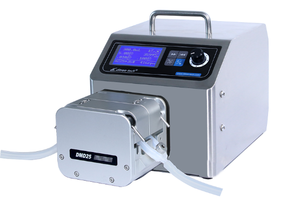

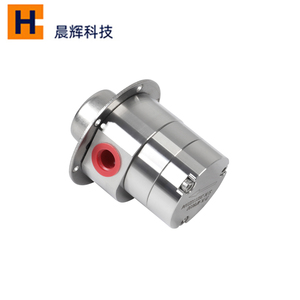



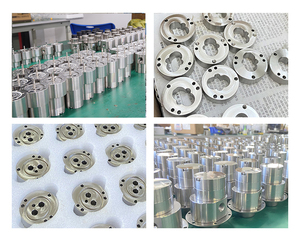











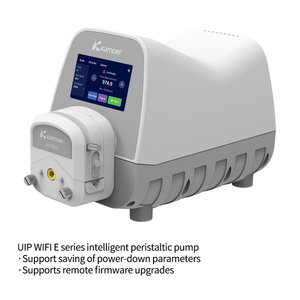
















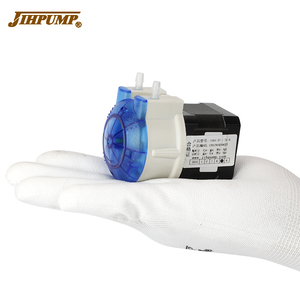


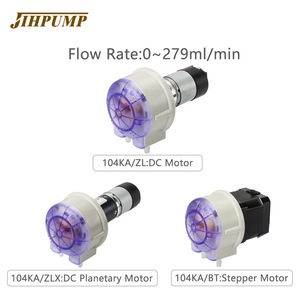

For industrial purposes, there are several types of peristaltic pump dispensers. This is based on their mechanism and design. Each type has particular benefits. And they are suitable for various applications. The mainly used types include:
These dispensers use a digital control system. Thus it allows precise adjustments to flow rate and volume. This feature is very vital for processes which require high accuracy. These processes may include chemical dosing or pharmaceuticals.
Digital peristaltic pumps also come with programmable settings. Hence they are able to store and recall specific dispensing protocols. This function improves efficiency and consistency in repetitive tasks.
These can withstand extreme operational conditions. They are thus suitable for high-viscosity fluids or thick industrial substances. These pumps usually come with reinforced tubing. They ensure durability even in harsh environments.
Moreover, they have increased flow rates. It makes heavy-duty pumps appropriate for large-scale operations.
The portable variant of these pumps is small and lightweight. This makes them ideal for field usage or less accessible areas. Despite the small size, they usually provide accurate dispensing capabilities.
This function is very good for laboratory experiments or small-scale production. They do not need much space. And they are very easy to transport.
These dispensers can simultaneously dispense multiple fluids. This feature saves time in operations that require the use of various liquids. These pumps have multiple heads. This allows them to handle several types of fluids at once.
They are best used in industries such as food processing and chemical manufacturing. In these industries, efficiency is crucial.
In this industry, peristaltic pump dispensers are useful for transferring and packaging corrosive and viscous chemicals. Their tubing flexibility reduces backflow and leakage possibility. This feature ensures the safe handling of hazardous substances.
And since these pumps can measure chemicals with high accuracy. This quality makes them suitable for precise dosage tasks. Additionally, their resistance to chemical degradation guarantees long-term reliability.
These dispensers have critical roles in drug formulation, packaging, and other pharmaceutical operations. The accuracy of peristaltic pumps is important for dosage consistency.
These pumps meet strict regulatory standards in this space. They also have clean operation. This means they do not contaminate the fluids being transferred. Furthermore, their low shear action maintains the integrity of sensitive biological products like vaccines.
In this sector, both food and non-food liquids use peristaltic pump dispensers. They have a safe pumping mechanism. This makes them ideal for transferring and packaging fruit juices, sauces, beer, and other liquids.
Since most of these pumps have tubing made of food-grade materials, it means they comply with hygiene standards. This ability reduces contamination risk. It also allows the smooth operation of products with varying viscosities.
These pumps are useful in water treatment facilities. They help pump chemical water treatments like chlorine or alum. The pumps deal well with varying flow rates and tubing diameters.
So, they adjust conveniently to the changing needs of such a facility. Further, their durability ensures they operate effectively in this space for several years. Lastly, since they can handle solids, they are good at pumping sludges and other solid-containing waters.
These pumps handle viscous fluids like oils and lubricants in this industry. The pumps can withstand extreme conditions. That is why they are suitable for high-pressure or low-temperature environments.
Further, their accurate dispensing is essential for tasks requiring precise fluid measurements. Also, since many models have explosion-proof features, they enhance safety in hazardous environments.
The quality of materials that make the peristaltic pump dispensers defines their endurance. The end users expect pumps to be made from premium metals and alloys. It is because these materials resist wear, corrosion, and fatigue that can hinder these pumps.
Also, dispensers with tubing made from reinforced elastomers provide better service. These tubings easily withstand extended usage. Furthermore, sturdy outer casings protect the internal components from environmental harm.
Frequent maintenance increases the lifespan of these dispensers. Regular checks allow pump users to identify wear and damages early enough. Also, if users adhere to manufacturers' maintenance schedules, they will replace worn-out tubing and other parts on time.
In addition, proper lubrication of moving parts ensures the pump operates efficiently and reduces friction. Dispensers requiring little maintenance may even last longer than those that need frequent checks.
The working conditions of these pumps influence their lifespan. Extreme temperatures, chemical exposure, or high humidity can affect performance. The good thing is that dispensers designed for harsh environments endure longer.
It is because they often have protective casings and corrosion-resistant materials. Also, good ventilation in the surrounding areas minimizes overheating. This practice will then ensure that the pumps operate smoothly for a long time.
Some design elements enhance the life of peristaltic pump dispensers. For instance, models with simplified maintenance access and robust components last long. Those with wear-resistant rollers andoptimizedkrachtwillafersreduceinternalfriction.
This reduction minimizes wear on both the tubing and the pump structure. Finally, designs that absorb shock and vibrational energy will reduce the impact on the internal mechanisms. All these features make the pumps durable.
The first step is to identify what the pump will do. If the pump will be used in chemical processes, buyers might need a digital-controlled dispenser. This type of pump allows accurate flow rates.
Again, if dispensing heavy fluids, opt for heavy-duty pumps. They handle such tasks with ease. Also, consider whether the fluid will have solids or not. For those fluids with solids, buyers have to ensure the pump tubing is reinforced.
How accurate should the pumps be when dispensing fluids? If the fluids require high accuracy during dispensing, choose a pump with a small aperture. Those meant for high-volume fluids are not that precise. So, always consider the flow rate.
Also, take note of the error margins. They can help avoid situations where the pump dispenses more or less than required.
Purchasers must select pumps made from tubing materials compatible with the fluids' chemical composition. Avoid pumps where the tubing material will corrode or degrade easily.
Buyers must also ensure the pump's flow rate, pressure, and temperature ratings meet the operational needs of the fluids. Consult with the manufacturers for advice on this aspect.
How easy will the pumps be to operate and maintain? Go for options with simple controls. It will be easy to program the dispensing settings. Many modern dispensers have user-friendly displays and digital interfaces for monitoring.
Also, select those with easy tubing replacements and service access. They allow quick adjustments without operational delays. Those with low power consumption will also reduce energy costs.
Yes, they are equipped to handle fluids of various viscosities. If the pump has reinforced tubing, it can easily manage high-viscosity substances such as sludges and pastes. Just ensure the pump has the right specifications for the fluid type. It will help maintain long-term efficacy.
No, they do not need lubrication like other centrifugal and positive displacement pumps. While some come with lubricated parts, most have frictionless components. They have elastomeric materials that may wear out over time, though. Just ensure users always check the manufacturer's instructions for pump care.
Yes, in the long run, these pumps are economical. As stated, they will have low maintenance and operational costs. Also, their ability to handle various fluids effectively without requiring lubrication saves expenses.
Further, due to their longevity, they reduce the need for frequent replacements. Thus, over time, they will offer significant savings to the users.
These devices can normally operate under a wide range of temperatures. However, extreme levels may compromise tubing materials. So, always consult the manufacturers so that they advise on the temperature limits of specific tubing materials.
They are widely used in chemical, pharmaceutical, food and beverage, water treatment, and medical industries. In these sectors, they are reliable for precise fluid transfer and dispensing. Furthermore, their versatility enables them to handle various liquids. This ability makes them ideal for multiple applications in all these spaces.